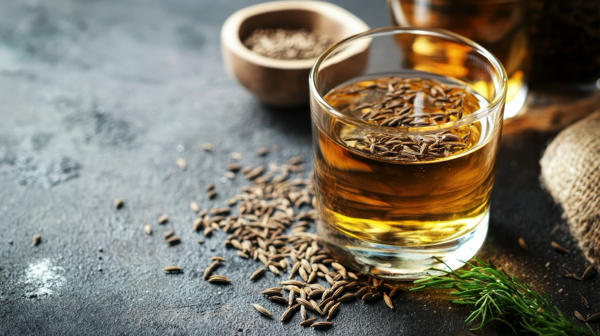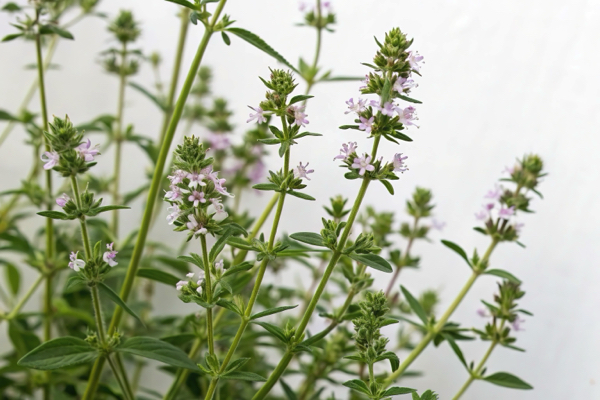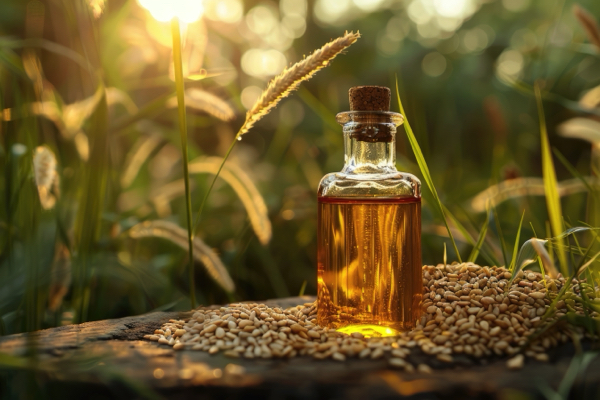Rue 101: Everything you need to know about the “herb of grace”
12/03/2024 / By Olivia Cook

Rue, scientifically known as Ruta graveolens, has been revered for its potent medicinal properties, culinary applications and even spiritual significance.
This plant’s legacy stretches back to antiquity, where it held symbolic and practical value. In the Bible, it is mentioned as a garden herb (Luke 11:42) used by the Pharisees for tithing and was later adopted in Christian ceremonies to sprinkle holy water on parishioners. This ritual gave rue its nickname, the “herb of grace,” reflecting its association with blessings and protection.
In ancient Greece and Rome, rue was more than a spiritual symbol. It was a culinary staple and a remedy for a variety of ailments. Physicians like Dioscorides and Hippocrates praised its versatility, using rue to treat digestive issues, fever and snake bites. Over time, rue became a cornerstone in medieval apothecaries, celebrated for its ability to ward off diseases.
Health benefits of rue
Rue’s health-promoting properties stem from its rich composition of bioactive compounds – each contributing uniquely to its therapeutic value.
Among its key constituents are flavonoids like rutin, quercetin and kaempferol, which are celebrated for their ability to counteract oxidative stress, reduce inflammation and strengthen fragile capillaries. These compounds support heart and vascular health and protect the body from free radical damage – promoting overall resilience against chronic conditions.
The herb also contains alkaloids, such as chalepensin and skimmianine, which play a pivotal role in its neuroprotective and sedative effects. These compounds help calm the nervous system, shield neurons from damage and intriguingly, exhibit potential anticancer properties by targeting abnormal cell growth.
Adding to rue’s arsenal are its essential oil components, which are responsible for its potent antimicrobial and insecticidal qualities. These compounds can ward off harmful bacteria, fungi and even parasites, making rue a valuable natural remedy for skin health and pest control.
Lastly, coumarins found in rue enhance blood circulation and may provide cardiovascular benefits, underscoring the herb’s role in promoting heart health and vitality.
Together, these compounds weave a complex tapestry of medicinal benefits, solidifying rue’s reputation as a remarkable natural healer.
Anti-inflammatory
Packed with vitamin C and anti-inflammatory flavonoids, rue eases joint pains and stiff muscles in conditions like arthritis and gout. Its expectorant properties make it useful for respiratory inflammation – clearing passages and relieving symptoms of the common cold or flu.
Anticancer and antioxidant
Recent studies highlight rue’s anticancer properties. Compounds like chalepensin and furanocoumarins have been shown to induce apoptosis or programmed cell death in cancer cells. This makes rue a potential tool for managing cancers, such as breast, colon and prostate cancers.
The herb’s antioxidants also play a critical role in preventing oxidative damage – a key driver of aging and chronic diseases. By scavenging harmful free radicals, rue helps protect cellular health and supports longevity.
Digestive and antispasmodic aid
By relaxing smooth muscles in the gastrointestinal tract, rue relieves bloating, cramping and symptoms of irritable bowel syndrome (IBS) – thanks to its antispasmodic properties. Flavonoids in rue, like rutin, also enhance gut health by reducing inflammation in the digestive lining – providing relief from colic and promoting a balanced digestive system.
Immune and antiviral support
Research indicates its ability to inhibit the replication of viruses, like herpes simplex and hepatitis B. This antiviral activity, combined with its antibacterial effects, positions rue as a potential aid in strengthening the immune system and preventing infections.
Natural hair protector
Rue’s insecticidal properties shine in hair care, particularly for battling lice. Rue essential oil, often incorporated into spa treatments, not only repel pests but also restores shine to damaged hair. Its ability to soothe scalp inflammation also adds another layer of appeal for those seeking natural remedies for itch-free, healthy locks.
Antifungal
Whether combating athlete’s foot, eczema or itchy skin, rue’s bioactive compounds, like rutin and quercetin, offer relief by reducing inflammation and fighting infections.
Rue also contains antioxidants that neutralize free radicals – protecting the skin from ultraviolet (UV) damage and delaying signs of aging. Its wound-healing properties also make it an effective anti-bleeder, helping cuts and scrapes heal faster.
Nervous system support
With its calming sedative properties, rue offers respite from anxiety, hysteria and even epileptic episodes. Alkaloids found in rue, such as skimmianine, desensitize and relax the nervous system. While these effects are promising, caution is advised as overuse can lead to neurotoxic effects.
For those seeking natural relaxation, rue essential oil is often used in aromatherapy.
How to use rue
Here is a guide to making the most of this versatile herb:
Infusion. Rue tea, prepared by steeping fresh or dried rue leaves in hot water, provides a soothing remedy for digestive discomfort and menstrual cramps. Its calming properties promote relaxation. Given its potency, it is crucial to use small amounts – about one gram per cup – to avoid potential toxicity.
Raw leaves. When applied directly to the skin, fresh rue leaves act as an antiseptic for small cuts or scrapes and serve as an effective mosquito repellent. However, caution is essential – rue’s compounds can cause skin irritation in sensitive individuals so washing your hands thoroughly after handling is advised.
Poultice. Crushed fresh rue leaves create a simple yet effective poultice for easing rheumatic pain, relieving joint stiffness and soothing sprains. Wrapping the poultice in a clean cloth or gauze can help prevent direct contact with the skin, reducing the risk of irritation for those with sensitivities.
Essential oil. Rue essential oil is a highly potent extract that can be used for targeted relief. A few drops applied to a cotton plug and placed over the ear can alleviate ear aches. However, due to its strength, the oil must never be ingested or applied undiluted to the skin as it can cause adverse reactions.
Cream. Topical rue creams are ideal for relieving pain associated with arthritis, rheumatism and sore muscles. Applied directly to affected areas, these creams provide localized relief and are a convenient option for chronic pain management.
Liquid extract. Rue’s liquid extract is a concentrated preparation that can be diluted in water for medicinal use. This extract is particularly useful for reducing inflammation and addressing delayed menstrual cycles. As with all concentrated herbal remedies, following precise dosage instructions is crucial to ensure safe use.
Tincture. When diluted with water, alcohol-based rue tinctures are effective for soothing digestive complaints and reducing inflammation. Their extended shelf-like makes tinctures a practical addition to any herbal medicine kit – providing relief when needed.
Capsules. Dried rue leaves encapsulated into supplement form offer a controlled way to harness its health benefits. These capsules are particularly effective for managing inflammatory conditions, like arthritis and easing menstrual pain. By standardizing the dosage, capsules minimize the risks of overconsumption while delivering consistent therapeutic effects.
Read more stories like this at Herbs.news.
Watch this video about rue, the “herb of grace.”
This video is from the Daily Videos channel on Brighteon.com.
More related stories:
Homeopathic remedies for tendonitis.
Home remedies relieve tooth and gum pain.
Sources:
Submit a correction >>
Tagged Under:
alternative medicine, anti-inflammatory, anticancer, antifungal, antioxidants, antiviral, digestion, essential oils, healing, health science, herbal medicine, Herbs, natural antibiotics, natural cures, natural health, natural medicine, naturopathy, phytonutrients, plant medicine, remedies, rue
This article may contain statements that reflect the opinion of the author
RECENT NEWS & ARTICLES
Digestion.News is a fact-based public education website published by Digestion News Features, LLC.
All content copyright © 2018 by Digestion News Features, LLC.
Contact Us with Tips or Corrections
All trademarks, registered trademarks and servicemarks mentioned on this site are the property of their respective owners.




















